Chinese Porcelain in New Mexico
by Linda R. Pomper
The essay on this page first appeared in Vormen uit Vuur, Volume 53
(1994), Pages 13–18.
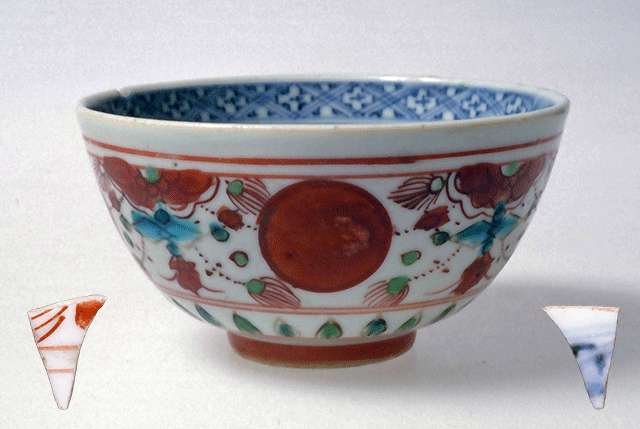
Fig. 1. Bowl, Chinese porcelain painted with overglaze enamels in red and
green, interior
painted in underglaze blue, 16th century, diam. 9.18 cm. Museum Het
Princesse-hof,
Leeuwarden. Inserts (not to the same scale):
shard, Chinese porcelain painted in overglaze
red enamels on
one side, underglaze blue on the other, 1598–1680, San Gabriel
de Yunque.
Usually we think of "export porcelain" as wares transported to Europe by the
Portuguese in the sixteenth century, by the Dutch as of the seventeenth and
later by
other European countries. However, from the sixteenth century onwards the
Spanish also carried porcelain from the Far East to their colonies in the
Americas. Shards of Chinese porcelain have been found in what is now New
Mexico (United States of America), which was then part of New Spain. These
shards are of interest not only because they provide an indication of Spanish
colonial taste, but also because they come from dated excavations, adding to
our information about the dating of Chinese porcelain of this period. Before
discussing the shards, some historical background about the trade between New
Spain and the Far East and about the settlements in New Mexico will be included.
Trade
The Spanish conquered Mexico during the first quarter of the sixteenth century.
At the same time, the Philippine Islands were explored by Ferdinand Magellan
and claimed as part of the Spanish Empire. The Philippines had been a market
for Chinese ceramics since Tang
times.[1]
Spanish traders quickly saw the opportunity to send Chinese porcelain to the
Spanish colonies in the Americas in exchange for silver, much in demand in China.
The recorded growth in the size of the Chinese community in Manila during the
sixteenth century and in the number of Chinese junks arriving in Manila could
indicate an increase in porcelain
imports.[2]
The first galleon crossed the Pacific from Manila to Acapulco in 1565, but large
shipments of porcelain did not begin to reach Acapulco until
1573.[3]
There an annual fair was held in January, and buyers came from all over New
Spain to buy porcelain. Some of it was then carried on muleback to Vera Cruz
via Puebla, while most of it was taken to Mexico City (see map). From there
part of the porcelain was carried up the Camino Real to the wealthy silver
mining settlements. The Irish friar Thomas Cage, an early seventeenth-century
visitor to Mexico City, wrote, commenting on the wealth to be seen in the
capital, that many inhabitants wore "the best silks from
China."[4]
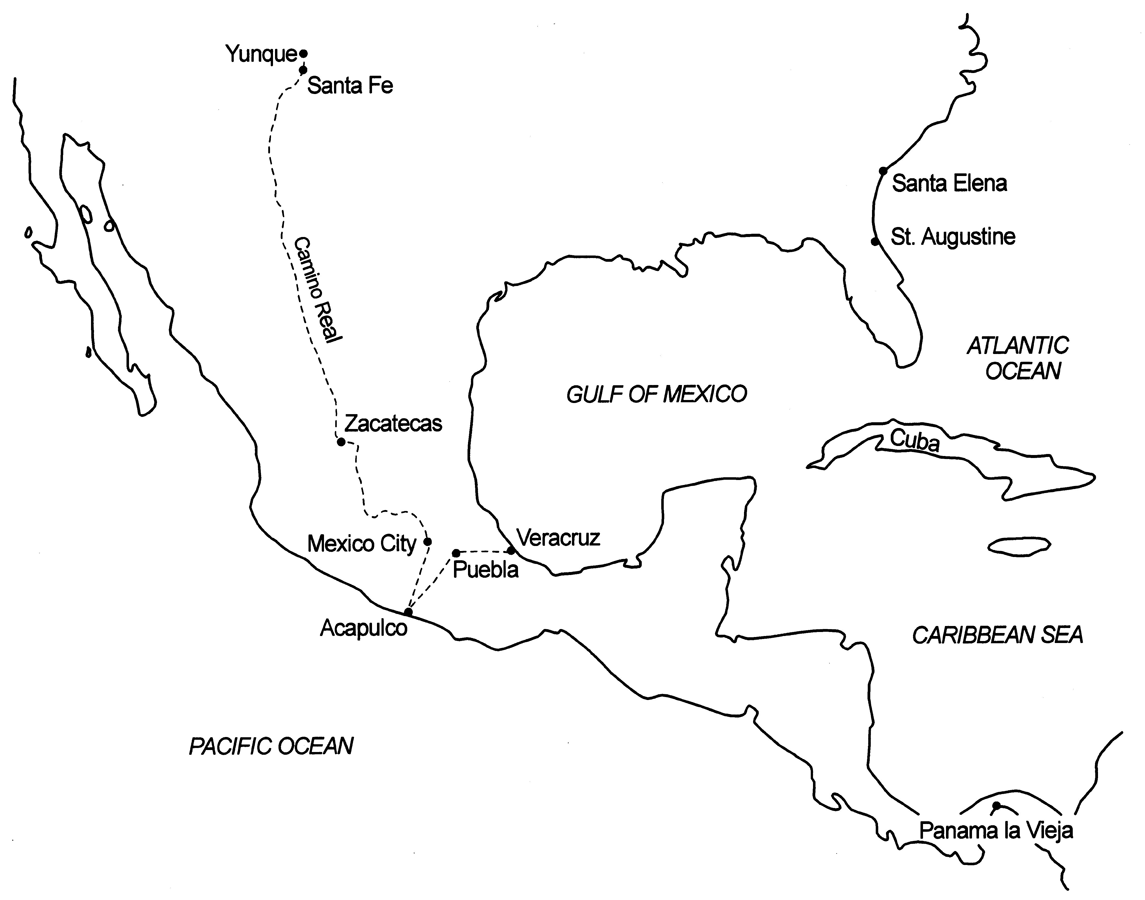
Previous to the Spanish conquest Mexico City (then Tenochtitlán) was
crisscrossed by canals. When Hernán Cortés decided to raze the city
to the ground, the canals were filled with debris and this continued after the
Conquest. Twentieth-century excavations for the Mexico City Metro uncovered a
large collection of archaeological artifacts including quantities of Chinese
porcelain shards. Although these cannot be dated, Chinese porcelain shards were
of such volume "as to make it obvious that it was not a ware used only by the
rich."[5]
Most of the shards found were parts of tea or wine cups and rice bowls.
Tea-drinking never became popular in Mexico; the cups were probably used for
the drinking of chocolate, which the Spaniards had adopted from the Aztecs.
While in the sixteenth century large collections of porcelain in Europe were
formed by noblemen such as the collection of the Medici and the one of Ferdinand
II of Austria at Schloss Ambras, in Mexico porcelain was the property of many
people.
Colonization
Several European expeditions explored in the area that is now New Mexico
during the sixteenth century, the most famous of which was that of Coronado
(1540–1541). A permanent colony was founded in 1598 by Juan de
Oñate of Zacatecas, a wealthy silver mining center; he received a
contract from the Spanish crown to colonize the northern frontier of New
Mexico.[6]
Careful records were kept of the personal posessions and household effects
the settlers brought with them. Although this was the northernmost outpost of
New Spain, a frontier settlement, a list of all the posessions of Doña
Francisca Galindo, a member of Oñate's 1600 expedition, indicates
that some
of these early settlers were of wealthy background and owned luxurious articles
of clothing and household goods:
Nine dresses, two of brown and green cloth, trimmed; another of velvet adorned
with velvet belts and gold clasps; another of black satin with silk gimps;
another of black taffeta, trimmed; another of coarse green cloth with sashes
embroidered in gold; another of crimson satin with sashes and gold trimming;
another of tawny color with a white Chinese embroidered skirt; further, two
silk shawls with bead tassels; four pairs of thin wool sleeves; one damask and
velvet hoopskirt; four ruffs, four cold coiffures; twelve plain bonnets, six
shirts; three pairs of fancy cuffs; one necklace of pearls and garnets with a
large cross; a headdress of
pearls...."[7]
Another of the settlers owned a "damask bedspread trimmed with gold and silk"
and "a green damask bedspread, finished on both sides, with fringes of silk and
gold."[8] With such
luxurious clothing and household goods, it is not surprising that Chinese
porcelain was found at the first Spanish settlement of San Gabriel de Yunque,
which was
founded in 1598. San Gabriel was abandoned in 1610, and the capital was
relocated to Santa Fe. The Palace of the Governors was built on the traditional
Spanish plaza in the center of Santa
Fe.[9]
The Native Americans revolted in 1680, and most of the settlers in the Santa Fe
area were massacred. The surviving colonists gathered in the Palace of the
Governors, but when the palace was besieged by the rebels they were forced to
abandon Santa Fe and retreat southward. Spanish control was not reestablished
until 1692.[10]
The Shards
The shards found at San Gabriel date from the period 1598–1610, while the
shards found in the excavations of the Palace of the Governors date from the
period 1610–1680. These two groups will be discussed here.
The most interesting shard from San Gabriel is painted in red on one side and
in blue on the other (Fig. 1). It can be related to wares of the kinrande
(gold brocade) type, which are associated with the Japanese market. Such pieces
are painted in solid colors, red, green or blue with gold-leaf decoration, and
bowls usually have a blue trellis border on the inside
rim.[11]
They are traditionally dated to the Jiajing Period (1522–1566) because some
of these pieces bear the Jiajing
mark.[12]
Wares of the kinrande type are in the collection of Schloss Ambras
formed in the latter part of the sixteenth century by the Archduke Ferdinand II
of Austria (1529–1595), and in the Topkapi Palace Collection of Istanbul.
The presence of many (44) pieces of kinrande wares in the Topkapi Palace
Collection, and the famous kinrande bowls acquired by Count Manderscheidt
in Turkey,[13]
have given cause to assume that such wares arrived in Europe from the Middle
East. Also, the collection of Cosimo de' Medici, which according to an inventory
taken in 1553 contained over 373 pieces of porcelain, could have had the Middle
East as its source. In 1545 Cosimo ordered the large sum of 450 ducats to be
paid to Jacopo Capponi, then about to depart for Egypt, in order that Jacopo
might buy there porcelain and carpets on his
behalf.[14]
Porcelain in red with gilt decoration is mentioned as being in the collection
of Queen Isabelle de Valois, third wife of Philip II of Spain, which was
inventoried in 1569: une aiguiere de terre de porcelain ... dorée a
l'exterieur sur fond rouge ("a porcelain pitcher ... with exterior gilding
on a red
background"). [15]
Also, an inventory of the porcelain collected by Philip II of Spain (r.
1556–1598), [16]
which was dispersed after his death, lists several pieces described as rouge
et or ("red and gold") that may have been kinrande
type. [17]
These pieces in the Spanish royal collection most likely came through the
Manila galleon trade. Porcelain decorated in gold must have been popular in
Mexico, since the two galleons of 1573 are recorded as having carried to
Acapulco "22,300 pieces of fine gilt China and other porcelain
ware." [18]
Two tiny shards found in the Palace of the Governors (1610–1680) have a
fine white body painted in overglaze enamels (Fig. 2). The painting on these
pieces resembles that on a dish in the Butler Family Collection painted in the
fully-developed famille verte style. This dish has been dated by its
resemblance to blue and red dishes dated 1672–1673 and painted in a similar
style.[19]
The decoration on the shard painted in green enamel, outlined in black,
resembles the rock on the Butler dish, while the deep yellow color on the
other shard can be found on the same dish. Few overglaze enamel pieces are
decorated in the Transitional style, and very few of these are dated, making
dating of such pieces
difficult.[20]
The dating of these shards to the period before 1680 accords with the theory
that the famille verte palette had been fully developed before 1675,
when "the Jingdezhen kilns were almost completely destroyed in the Rebellion
of the Three
Feudatories."[21]
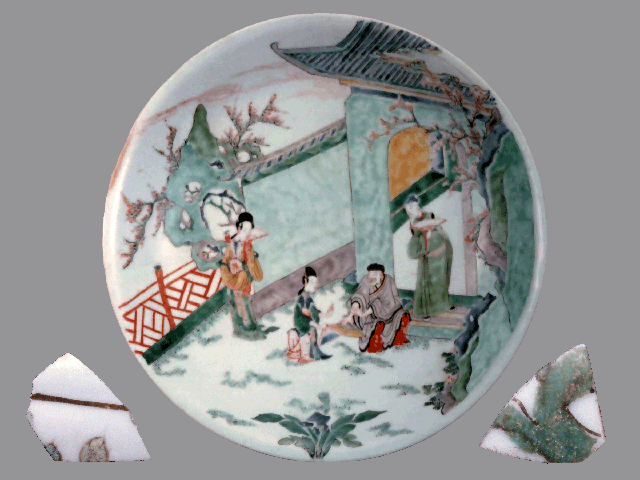
Fig. 2. Dish with rounded sides and everted rim, Chinese porcelain
painted in famille
verte enamels (three shades of green, yellow, aubergine, and
blue), early Kangxi
Period (ca. 1665–1674), diam. 35 cm. The Butler Family
Collection. Inserts (not to the
same scale): two shards, Chinese porcelain, one painted in green
enamels defined
with black, and
the other painted in yellow enamels, 1610–1680, Palace of the
Governors, Santa Fe.
One could expect to find porcelain of the kraak type at Santa Fe, since
shards of blue and white porcelain in the kraak style have been found
in various sites settled by the Spanish in the Caribbean area, including
Florida, California, the Dominican Republic, Cuba, Panama, and Mexico.
Kraak ware was mass-produced for the export market, and its quality
varied. Kraak porcelain shards discovered in the San Francisco,
California area date from Francis Drake's landing in 1579 and from the wreck
of the San Agustín in 1595. Among the kraak wares, the majority
of the wares obtained from both sources, a few shards of excellent quality
have been
found.[22]
Small cups and bowls are the shapes most frequently represented. However, the
presence of fragments of a wine ewer recovered at Santa Elena, South
Carolina,[23]
and a phoenix-shaped ewer from Panama la
Vieja,[24]
indicate that some more elaborate shapes were carried to the New World in the
galleon trade.
One shard from the Palace of the Governors is painted with foliage in blue,
the pigment extending over the outline (Fig. 3). This style is typical of the
painting on certain kraak pieces, such as the bowl in The Metropolitan
Museum of Art in New York. The blue color of the shard also matches the color
on an intact kraak piece, not far from the excavations, that was
available for study in Santa Fe.
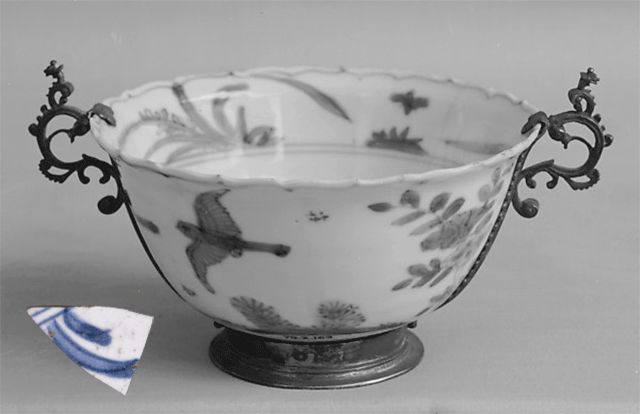
Fig. 3. Cup, Chinese porcelain painted in underglaze blue, with silver
mount, Wanli
Period (1573–1619), h. 8 cm, diam. 10.25 cm, The Metropolitan Museum
of Art, New
York, purchase by subscription, 1879, 79.2.163. Insert (not to the same
scale): shard, Chinese
porcelain, painted
in underglaze blue, 1610–1680, Palace of the Governors, Santa Fe.
Another shard from the Palace of the Governors seems to be part of a molded
rim, finely painted in underglaze blue with a stylized branch of Prunus
(Fig. 4). This type of decoration appears on the exterior of kraak
pieces dated by Rinaldi to both the later sixteenth and early seventeenth
centuries.[25]
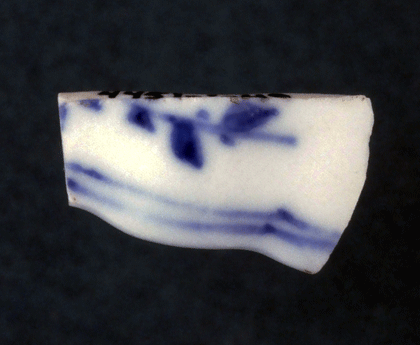
Figure 4. Shard, Chinese porcelain
painted in underglaze blue, 1610–1680,
Palace of the Governors, Santa Fe.
Finally, the design of a stylized, four-petaled flower as seen on another
blue and white shard from the Palace of the Governors can also be seen on
certain high-quality wares of the Transitional Period, particularly those made
during the reign of Chongzhen (1628–1644), such as a ewer in The
Metropolitan Museum of Art (Fig. 5). Although this ewer was made in a
European shape for the Dutch market, these stylized flowers also appear on
pieces in the Topkapi Palace
Museum.[26]
The pieces on which such a flower appears are generally high-quality blue and
white wares.
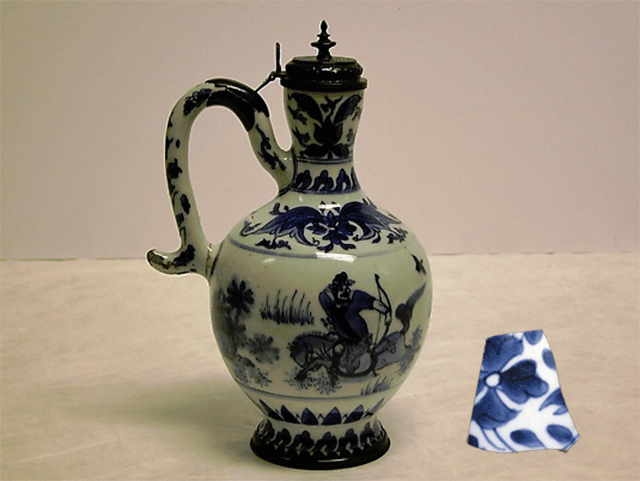
Fig. 5. Ewer, Chinese porcelain painted in underglaze blue, with European
silver
mounts, Chongzhen Period (c. 1640–1650), h. 26 cm, The Metropolitan
Museum of
Art, New York, Rogers Fund, 1917, 17.61. Insert (not to the same scale):
shard, Chinese
porcelain painted in
underglaze blue, 1610–1680, Palace of the Governors, Santa Fe.
Other shards discovered in New Mexico include a blue shard with gilt decoration
found in the Palace of the Governors and a piece painted in red. They are an
indication of the wide variety of wares found in Spanish settlements.
Excavations are continuing at numerous Spanish colonial sites in North America
and the Caribbean. Chinese porcelain has been found at many of these sites.
These finds help to expand our knowledge of the galleon trade and, in some
cases, can facilitate the dating of Chinese porcelain.
The Maxwell Museum gratefully acknowledges the assistance of Linda R.
Pomper in adding this article to its online exhibit. For additional articles
by the same author, please see:
Linda Rosenfeld Shulsky, "Philip II of Spain as Porcelain Collector,"
Oriental Art Vol. 44, No. 2 (1998), pp. 51–54.
Linda Rosenfeld Pomper, "New Perspectives on Kinrande," Arts of Asia
September-October 2014, pp. 73–82.
Notes:
1. Kamer Aga-Oglu, "Ming Porcelain from Sites
in the
Philippines." Archives of the Chinese Art Society of America, Vol. XVII
(1963), p. 7.
2. Jean McClure Mudge, Chinese Export
Porcelain in
North America, New York 1986, p. 276, n. 22 "From 150 Chinese in 1571,
this number had multiplied by 1588 to 10,000, to 24,000 in 1596, to 30,000 in
1603, to 40,000 in 1749 (...) in 1574, six [junks] were recorded, in 1580,
forty or fifty."
3. William Lytle Schurz, The Manila
Galleon, New York 1939, pp. 15 and 27.
4. Ibid., p. 363.
5. Florence C. Lister and Robert H. Lister,
"Non-Indian Ceramics from the Mexico City Subway," El Palacio, Vol. 81,
No. 2, p. 43.
6. Myra Ellen Jenkins and Albert H. Schroeder,
A Brief History of New Mexico, Albuquerque 1974, pp. 18–19.
7. George P. Hammond, Don Juan de
Oñate and the Founding of New Mexico, Santa Fe 1927, p. 539.
8. Ibid., p. 527.
9. Jenkins and Schroeder, op. cit. (Note
6), p. 20.
10. Ibid., p. 22.
11. A shard of blue and whilte porcelain
with a trellis border on the inside rim, typical of the Jiajing Period, most
likely from Drake's visit in 1579, was found at Drake's Bay. Clarence
Shangraw and Edward Von der Porten, The Drake and Cermeño
Expeditions: Chinese Porcelains at Drake's Bay California 1579 and 1595,
Santa Rosa Junior College and Drake Navigator's Guild, Santa Rosa and Palo Alto,
California 1981, p. 62.
12. Sir Harry Garner, Chinese Export
Art at Schloss Ambras, London 1975, p. 5.
13. Regina Krahl and Nurdan Erbahar,
Chinese Ceramics in the Topkapi Saray Museum, Istanbul: A Complete
Catalogue. London 1986, Vol. II, p. 604.
14. R. W. Lightbown, "Oriental Art and the
Orient in Late Renaissance and Baroque Italy." Journal of the Warburg and
Courtland Institutes, Vol. 32 (1969), p. 232.
15. Jean Charles Davillier, Les
Origines de la Porcelaine en Europe. Paris and London 1882, p. 128.
16. The inventory was drawn up in 1602.
Maura Rinaldi, Kraak Porcelain, London, 1989, p. 63. Recent attempts
by Daisy Lion-Goldschmidt have failed to find it (Daisy Lion-Goldschmidt,
"Les Porcelaines Chinoises du Palai de Santos," Arts Asiatiques, Vol.
39, Paris (1984), p.11.
17. Davillier, op. cit. (Note 15), p. 129.
These pieces are mentioned as belonging to Philip II at the Escorial in 1577.
18. Schurz, op. cit. (Note 3), p. 27.
19. Seventeenth-Century Chinese
Porcelain from the Butler Family Collection, Art Services International,
Alexandria, Virginia 1990, p. 172.
20. Margret Medley, "Trade, Craftmanship,
and Decoration," in ibid., p. 17. Perhaps the most well-known dated piece is
the jar from the Russell Tyson Collection, dated 1646, in the Chicago Art
Institute, illustrated in Stephen Little, Chinese Ceramics of the
Transitional Period, 1620–1683, New York 1983, pp. 98 and 99,
Pl. 42.
21. Medley, op. cit. (Note 20), p. 17.
22. Shangraw and Von der Porten, op. cit.
(Note 11), pp. 73 and 74.
23. Santa Elena was established in 1556
and abandoned permanently in 1587. Stanly South, Russell K. Skowronek, and
Richard E. Johnson, "Spanish Artifacts from Santa Elena," Anthropological
Studies 7, University of South Carolina, Fig. 35
24. Panama la Vieja was founded in 1519
and destroyed in 1671. Henry Alexander Baker, Archaeological Excavations in
Panama la Vieja 1968, University of Florida 1969, Fig. 8.
25. Rinaldi, op. cit. (Note 16), Pl. 52
and p. 123, Pl. 131. Perhaps whole pieces were taken from San Gabriel de
Yunque to
Santa Fe, which would account for an earlier date of this shard.
26. Krahl and Erbahar, op. cit. (Note
13), p. 811, Fig. 1629.
Photo Credits:
Figure 1, bowl: Johan v.d. Veer.
Fig. 3, cup; Fig. 4, ewer: The Metropolitan Museum of Art.
The photos of ceramic fragments were taken by Blair Clark.
Map rendered by D. Phillips.
See source code for copyright information.
Page last revised on April 13, 2015.
Please report problems to toh@unm.edu





